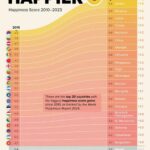

Job growth among private companies slowed in May to its most glacial pace since the start of the country’s economic recovery from the pandemic.
On Thursday, payroll processing firm ADP said private payrolls grew by 128,000 in May — much worse than anticipated and a harbinger for Friday’s much-anticipated May jobs report from the Bureau of Labor Statistics.
The consensus forecast for Thursday’s report was 300,000 jobs. The disappointing numbers show that employers are struggling to find workers as the number of job openings clocks in at near-record levels.
Small businesses posted the worst numbers last month. Companies with fewer than 50 employees reduced payrolls by 91,000, while large companies of more than 500 employees increased payrolls by 122,000. Mid-sized companies notched nearly 100,000 new jobs.
JOB OPENINGS NEAR RECORD HIGHS DESPITE FED RATE HIKES
“The biggest constraint on the labor market in the spring of 2022 is labor supply, not demand. Job openings are very high, but businesses are having difficulty in filling them,” said PNC Chief Economist Gus Faucher. “The Federal Reserve would be happy to have job growth slow over the course of 2022 to a more sustainable pace, reducing inflationary pressures.”
The number of job openings in April was 11.4 million, near record levels, according to a report released on Wednesday by the Bureau of Labor Statistics. The previous record number was notched in March and upwardly revised this week to 11.9 million.
The Fed hiked its interest rate target by a quarter percentage point in March, the first time it did so in years. It later jacked up rates by a half percentage point last month, a move akin to two simultaneous rate hikes and an aggressive tack taken for the first time in more than two decades.
The action is designed to slow spending and drive down prices, which are inflated to the worst degree since the early 1980s. The trade-off for dampening prices is that it also slows the economy and can result in the jobs market taking a hit.
Economists will be watching Friday’s jobs report closely to see the effect the rate hikes have had on job growth given that the labor market has largely overperformed since the start of the year.
The economy beat expectations and added 428,000 jobs in April, although forecasters expect this week’s report to show that job growth slowed to 325,000.
The unemployment rate is currently at 3.6%, near the ultra-low level it was just before the pandemic took hold back in early 2020.
CLICK HERE TO READ MORE FROM THE WASHINGTON EXAMINER
President Joe Biden’s approval ratings have taken a nosedive in recent months as inflation continues to balloon. Consumer prices increased by 8.3% in the 12 months ending in April, a slight downward tick from the 8.5% registered the month before.
While some economists believe inflation has now reached its zenith, it will still take months for the Fed to drive down prices to the 2% annual growth level it is targeting, meaning that Biden and Democrats will continue to face political pressure from Republicans heading into this year’s midterm elections.





